Guruvayur Temple
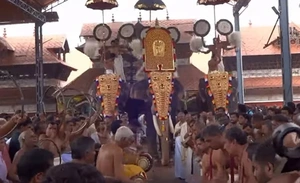
Guruvayur Temple is one of the most famous and richest Hindu temples in the world.
It is located in the Trissur district of Kerala.
It is dedicated to Lord Krishna.
It is the 4th biggest temple in India in terms of the number of devotees.
An estimated 7 million devotees visit this temple annually.
The greatness of the idol of Guruvayur temple
After completing the purpose of his avatara as Krishna, Lord Vishnu was about to return to his abode.
The Lord was at Dwaraka at that time.
There was an idol of the Lord made of Pathala Anjana stone which the nobles of Dwaraka worshiped.
The Yadu Vamsha was already eliminated and Dwaraka was about to submerge under the sea.
Uddhava was one of the closest devotees of the Lord.
The Lord called Uddhava and said: find a suitable place and install this idol; even after I return to Vaikuntha, my complete presence will be there in this idol.
The Lord disappeared soon.
The Lord had given darshana to his parents, Vasudeva and Devaki while they were in the prison.
The idol represented the form that Vasudeva and Devaki had seen.
It is called Balavishnu.
The upper right-hand holds Sudarshana chakra.
The upper left-hand holds Panhajanya.
The lower right-hand holds a lotus.
The lower left-hand holds Gada.
Uddhava approached Devaguru Brihaspati and sought his advice.
As they were talking, Vayu Deva appeared.
Vayu Deva informed them that he knew a sacred place in Parashurama kshetra (Kerala as it was reclaimed by Parashurama from the sea).
The presence of Uma - Maheshwara was already there at that place (Mammiyoor).
It was a beautiful place with a lake and gardens.
Munis and Siddhas observed tapas there.
That place would be ideal for the installation of the idol.
Uddhava, Brihaspati, and Vayu Deva reached the place traveling through the sky.
The installation of the idol was performed on the day of Utthana Ekadashi in the lunar month of Karthika in the presence of Devas, Munis and Siddhas.
According to the text Rupamandana, the idol conforms to the form of Janardana.
According to Virat Brahma Samhita, it is Vasudeva.
What is behind the name Guruvayur?
“OOr” in Malayalam means place.
Since the place was discovered by Guru and Vayu, it came to be known Guruvayur.
Guru + Vayu + Oor = Guruvayoor / Guruvayur.
According to the 14th-century book Kokasandesha, the place was known as Kuravayur.
Kuravayur means place on the seashore.
The place was originally known as Ambapuram owing to the presence of Uma - Maheshwara temple there.
Ambapuram is the Sanskrit version of Ammayur.
Ammayur = Amma + Oor.
Ammayur later beacame Mammiyur.
Mammiyur = Mahima + Oor (Great place).
Mammiyur Uma - Maheshwara temple is also very famous.
Other deities in the temple complex
- Ganapathy
- Shastha
- Bhagavathy
History
King Janamejaya the successor of the Pandavas conducted a Sarpa Yajna to avenge the killing of his father Parikshit by the serpent Takshaka.
Millions of serpents were killed in this Yajna.
Janamejaya incurred the wrath and curse of the serpents due to this.
He was affected by leprosy.
Lord Dattatreya advised him to take refuge at the feet of Guruvayurappan.
After 10 months of worship of Guruvayurappan, Janamejaya was completely cured.
The grand temple was originally built by Janamejaya about 5000 years ago.
The temple was later renovated by king Kulashekhara Perumal (9th century CE).
Mallissery Namboothiri was the original caretaker of the temple.
It was later taken over by the Zamorins of Calicut who appointed Chennas as the Tantri of the temple in the place of Puliyannoor.
The temple had been the target of invasions by the Dutch, Hyderali, and Tipu Sultan.
12 forms of Guruvayurappan during various pujas
|
Form |
Puja |
Description |
|
Vishwaroopa |
Nirmalyam |
As soon as the door to the sanctum sanctorum is opened in the morning. |
|
Vatarogaghna |
Tailabhisheka |
During oil abhisheka, the Lord cures rheumatic diseases. |
|
Gokulanatha |
Vakacharthu |
Applying a powder called vaka for removing oil. |
|
Santanagopala |
Shankhabhisheka |
When abhisheka is performed with a conch shell. |
| Gopikanatha | Balalamkaram | When the Lord is dressed up as a child. |
| Yashodabala | Abhisheka with milk, etc. | |
| Vanamala Krishna | Navakabhisheka | |
| Sarvalankara Bhushana | Uccha puja | Puja during noontime. |
| Sarva Mangala Dayaka | Sayamkala puja | Evening puja. |
| Mohana Sundara | Deeparadhana | Arati at sunset. |
| Vrindavanachara | Athazha puja | Night puja. |
| Shesha Shayana | Trippuka |
Just before the closing of the temple door. |
Results of darshan during various pujas
|
Puja |
Result |
|
Nirmalyam |
Relief from the results of grave sins. |
|
Tailabhisheka |
Relief from rheumatic diseases. |
|
Vakacharthu |
Relief from troubles. |
|
Shankhabhisheka |
Gain of wealth. |
| Balalankara | Increase in devotion. |
| Shankha Prokshana | Relief from sins such as Brahmahatya. |
| Shri Bhuta Bali | Begetting children. |
| Palabhisheka | Relief from infertility. |
| Elaneer, Panineer abhisheka | Relief from stress and mental issues |
| Navakabhisheka | Relief from eye diseases. |
| Pantheerati | Relief from misery and grief. |
| Uccha puja | Gain of knowledge and detachment. |
| Three times Sheeveli | Relief from the results of sins. |
|
Deeparadhana |
Happy and long married life. |
| Athazha puja | Relief from abdominal diseases. |
| Trippuka | Attainment of moksha. |
|
Sashtanga Namaskara |
Long life. |
| Pradakshina | Relief from sins of previous births. |
| Bhagavati Azhal Darshanam | Relief from all troubles. |
Krishnanattam
It is a dance form unique to Guruvayur temple.
Krishnanattam is believed to be the predecessor of Kathakali.
Based on a 14th-century composition by Zamorin Manadeva Varma, Krishnanattam depicts the leelas of Lord Krishna.
Except on Tuesdays and the monsoon season (June to September), Krishnanattam is performed every day.
Devotees sponsor Krishnanattam as an offering praying for various results.
The performance is divided into eight parts.
Results of sponsoring Krishnanattam
|
Part |
Result |
|
Avataram |
Begetting children. |
|
Kaliya Mardanam |
Cure from toxicity. |
|
Rasakreeda |
Marriage for girls, solution to marital discord. |
| Kamsa Vadham |
Defeat of rivals. |
| Swayamvaram |
Happy marriage. |
| Bana Yudham | Fulfillment of commitments. |
| Vividha Vadham | Abundance and prosperity. |
| Swargarohanam | Sadgati for the departed souls. |
Guruvayur Temple Timings
|
Puja |
Timing |
|
Nirmalyam |
3.00 am to 3.20 am |
|
Thailabhishekam, Vakacharthu, Sankhabhishekam |
3.20 am to 3.30 am |
|
Malar Naivedyam, Alankaram |
3.30 am to 4.15 am |
|
Usha Naivedyam |
4.15 am to 4.30 am |
| Ethirettu pooja and Usha pooja | 4.30 am to 6.15 am |
|
Sheeveli, Palabhishekam, Navakabhishekam, Pantheeradi Nivedyam, and Pooja |
7.15 am to 9.00 am |
| Uccha pooja | 11.30 am to 12.30 pm |
| Sheeveli | 4.30 pm to 5.00 pm |
| Deeparadhana | 6.00 pm to 6.45 pm |
| Athazha pooja | 7.30 pm to 8.15 pm |
| Athazha seeveli | 8.45 pm to 9.00 pm |
| Thrippuka, Olavayana | 9.00 pm to 9.15 pm |
| Closing time | 9.15 pm |
List of Offerings
| Palpayasam | 35.00(1/4 ltr), 140.00(1 ltr) |
| Neipayasam | 50.00(1/4 ltr), 200.00(1 ltr) |
| Sarkarapayasam | 45.00(1/4 ltr), 180.00(1 ltr) |
| VellaNivedyam | 28.00 (1 unit) |
| Appam | 20.00 (2 nos) |
| Ada | 20.00 (2 nos) |
| Avil | 12.00 |
| Thirumadhuram | 10.00 |
| Butter Nivedyam | 15.00 |
| Sugar Plantain | 15.00 |
| Undamala | 50.00 |
| Thirumudimala | 15.00 |
| Niramala | 125.00 |
| Valiya Niramala | 4500.00 |
| Annaprasam (Chorun) | 20.00 |
| Bhagavathy Azhal | 20.00 |
| Butter after Japam | 5.00 |
| Kelikkayyu | 10.00 |
| Purusha sooktham | 3.00 |
| Ashtotharam Archana | 4.00 |
| Sahasra namam Archana | 5.00 |
| Alankaram with Kalabham (6 Balls) | 9000.00 |
| Kalabham 1 Ball | 1500.00 |
| Kalabham 1 Packet | 50.00 |
| Ghee Lamp | 1.00 |
| Ghee Lamp in Sreekovil | 3000.00 |
| Ghee Lamp in Sreekovil | 4500.00 |
| Ghee Lamp in Sreekovil | 500.00 |
| Thali pooja | 10.00 |
| Oil Abhishekam (250ml) | 200.00 |
| Malar Nivedyam | 24.00 |
| Marriage | 250.00 |
| Ashtapathi (One Chapter) | 2.00 |
| Geetha ( One Chapter) | 2.00 |
| Bhagavatham (One Chapter) | 2.00 |
| Bhagavatha Sapthaham | 1000.00 |
| Narayaneeyam (One Dasakam) | 2.00 |
| Ganapathy Archana | 3.00 |
| Sastha Archana | 3.00 |
| Lalitha Sahasra nama Archana | 5.00 |
| Palada Pradhaman | 160.00 (1 ltr) |
| Eratti Payasam | 180.00 (1 ltr) |
| Namaskaram (Approximate) | 10000.00 |
| Nalambalam Vilakku Veypu | 8000.00 |
| Athazham (Approximate) | 11000.00 |
| Palakapuram | 5000.00 |
| Ahassu | 2000.00 |
| Malayidal ( Sabarimala) | 10.00 |
| Kettu Nira ( Sabarimala) | 20.00 |
| Thulabharam Thattil Panam( Cost of Items extra) | 5.00 |
| Anayoottu | 12000.00 |
| Go-pooja | 250.00 |
| Go-Preethi | 10.00 |
| Maintenance of Elephants | Any amount |
| Alroopam | Any amount |
| Prasada oottu | Any amount |
| Vahana pooja (Heavy Vehicles) | 300.00 |
| Vahana Pooja Car, Jeep etc | 150.00 |
| Vahana Pooja Auto rikshaw, Motor cycle etc | 75.00 |
| Vidyarambham | 50.00 |
| Saptha Sudhi Abhishekam | 202.00 |
| Saptha Sudhi Abhishekam (Minimum) | 2.00 |
| Veda Parayanam | 1400.00 |
| SapthasudhiAbhishekam | 202.00 |
| Sapthasudhi (min) | 20.00 |
| Vedaparayanam | 2400.00 |
| Milk Abhishekam | 52.00 |
| Chuttambalalam | 12000.00 |
| Chandanam Urula | 800.00 |
| East Deepasthambham | 5000.00 |
| West Deepasthambham | 5000.00 |
| Bhagavathy Chuttuvilakku | 3500.00 |
| Nivedyakooru | 1.00 |
| Kadali | 4.50 |
| Vettila Adakka | 2.00 |
| Gayathry NeyJapam | 5.00 |
| Avatharam | 2000.00 |
| Kaliamardhanam | 2000.00 |
| Rasakreeda | 2000.00 |
| Kamsavadham | 2000.00 |
| Swayamvaram | 2000.00 |
| Bhanayudham | 2000.00 |
| Vividhavadham | 2000.00 |
| Swargarohanam | 2300.00 |
| Chuttuvilakku (2025 Onwards) * | 50000.00 |
| Sastha Chuttuvilakku | 8000.00 |
| Chuttambalam Theliyikkal | 13000.00 |
| Prasada Kit | 200.00 |
| Prathyaksha Ganapathy Homam (On Every Muppattu Friday) | 25000.00 |
Tulabharam
Offering some holy material equal to one's body weight is called tulabharam.
List of items and charges
| BUTTER | KGS | 300 |
| ILANEER (TENDER COCONUT) | NOS | 10 |
| CHERUPAZHAM (PLANTAIN) | KGS | 15 |
| KADALIPAZHAM (PLANTAIN-KADALI) | KGS | 30 |
| BANANA | KGS | 30 |
| POOVANPAZHAM (PLANTAIN-POOVAN) | KGS | 20 |
| SUGAR | KGS | 30 |
| SHARKARA (JAGGERY) | KGS | 30 |
| VELLAM | KGS | 25 |
| POORI PANCHASARA(SUGAR CUBES) | KGS | 30 |
| THEERTHKUDAM | KGS | 20 |
| GINGELY | KGS | 100 |
| KAYAR COIR | KGS | 15 |
| AVIL (FLATTEND RICE) | KGS | 25 |
| CHENA(ELEPHANT YAM) | KGS | 10 |
| ILAVAN (ASHGOURD) | NOS | 10 |
| MATHAN | KGS | 10 |
| THULASI | KGS | 30 |
| RICE | KGS | 25 |
| DATES | KGS | 50 |
| SALT | KGS | 10 |
| UMI(HUSK) | KGS | 10 |
| ULUVA(FENUGREEK) | KGS | 40 |
| OIL | KGS | 100 |
| KALKANDAM(SUGAR CANDY) | KGS | 50 |
| MUSTARD | KGS | 40 |
| KARIVEPPILA(CURRY LEAF) | KGS | 10 |
| PEPPER | KGS | 300 |
| COCONUT SHELL | KGS | 10 |
| CHAKIRI (COCONUT FIBRE) | KGS | 10 |
| CHAKIRINARU | KGS | 10 |
| GEERAKAM(CUMMIN SEED) | KGS | 150 |
| THAVIDU(BRAN) | KGS | 10 |
| NADAN CHANDANA MUTTI /SANDAL WOOD | KGS | 300 |
| NALIKERAM POLICHATHU (SCRAPPED COCONUT) | KGS | 10 |
| NALIKERAM POLIKATHATHU (UNSCRAPPED COCONUT) | KGS | 15 |
| NEWS PAPER | KGS | 10 |
| MANALCHAKKU (SAND BAG) | KGS | 20 |
| MALAR | KGS | 20 |
| MANJAL (TURMERIC) | KGS | 75 |
| MADAL(SALK OF COCONUT) | KGS | 10 |
| GHEE | KGS | 325 |
| NOTE BOOK NEW | KGS | 30 |
| KADALA OR PAYAR(BENGAL GRAM) | KGS | 35 |
| LOTUS FLOWER | NOS | 50 |
| IRON | KGS | 10 |
| KUNNIKURU | KGS | 20 |
| PADDY | KGS | 15 |
| MYSOOR SANDAL | KGS | 215000 |
| CHERUKAYA | KGS | 10 |
| NENTHRAKAYA(RAW BANANA) | KGS | 25 |
| SILVER | KGS | 45000 |
| VELLARI | KGS | 10 |
| COIN | KGS | 200 |
| VAIKKOL(HAY) | KGS | 10 |
| JEERAKAM(CUMMIN SEED) | KGS | 150 |
| WHITE PAPER(NEW) | KGS | 30 |
| VIRAKU(FIREWOOD) | KGS | 10 |
Nearest Airports
- Kochi - 80 km
- Calicut - 100 km
Nearest Railway Stations
- Guruvayur
- Trissur - 28 km
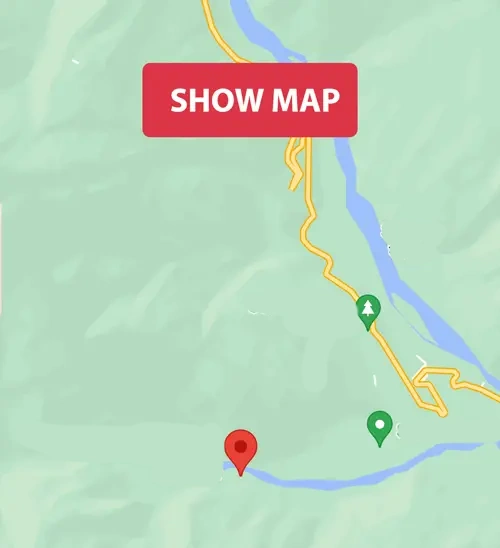
Recommended for you
History Of Tirupati Temple
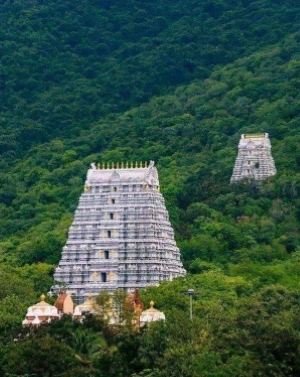
Tirumalai has always been known by its ancient name Vengadam (Tiruvengadam) and the Hill on which the Temple stands was known as the Vengadam Hills.....
Click here to know more..Animal Sacrifice In Vedic Yajnas
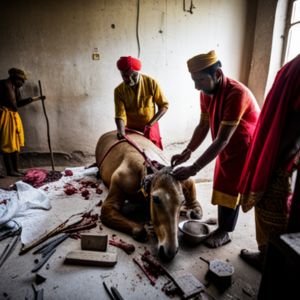
Learn about the symbolism behind animal sacrifice in Vedic yajnas....
Click here to know more..Ayyappa Sahasranamavali
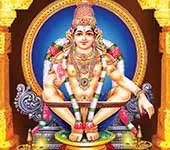
गणानां त्वा गणपतिं हवामहे कविं कवीनामुपवश्रवस्तमम्। ज्....
Click here to know more..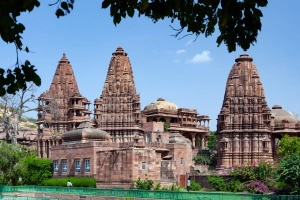
English Topics
Temples
Click on any topic to open
- 71 Ahobilam - Lord Narasimha's Sacred Abode
- 70 Malaikottai Temple, Trichy - Discover Spiritual Bliss
- 69 Jambukeswarar Temple, Trichy
- 68 Vaitheeswaran Koil - A Healing Pilgrimage
- 67 Dwaraka and Somnath
- 66 Khidkali Mahadev Mandir
- 65 Pongu Sani Temple, Thirukollikadu
- 64 The Unique And Fascinating Jharni Narasimhaswamy Temple, Bidar
- 63 Yamunotri: A Spiritual Haven in the Himalayas
- 62 Anantha Padmanabha Swamy Temple - Fascinating Legends
Please wait while the audio list loads..
30
Ganapathy
Shiva
Hanuman
Devi
Vishnu Sahasranama
Mahabharatam
Practical Wisdom
Yoga Vasishta
Vedas
Rituals
Rare Topics
Devi Mahatmyam
Glory of Venkatesha
Shani Mahatmya
Story of Sri Yantra
Rudram Explained
Atharva Sheersha
Sri Suktam
Kathopanishad
Ramayana
Mystique
Mantra Shastra
Bharat Matha
Bhagavatam
Astrology
Temples
Spiritual books
Purana Stories
Festivals
Sages and Saints
